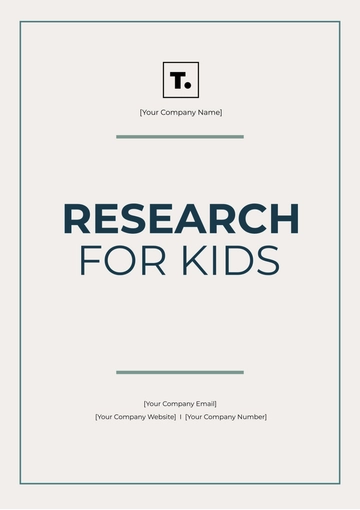Qualitative Case Study
I. Introduction
The introduction sets the stage for the case study by providing background information on the subject of investigation and stating the purpose and objectives of the study. It should provide a clear overview of what the reader can expect to learn from the case study.
A. Background
In this section, provide context about the case study subject, including relevant background information, historical context, and any previous research or literature on the topic.
B. Research Objective
Clearly state the research question or objective of the qualitative case study. This section should articulate the specific aims and goals of the study, guiding the reader toward understanding the focus of the research.
II. Methodology
The methodology section outlines the research design, data collection methods, and analytical approach employed in the qualitative case study. It offers transparency and allows readers to assess the rigor and validity of the study.
A. Research Design
Describe the overall approach to the qualitative case study, such as exploratory, descriptive, or explanatory. Explain why this design was chosen and how it aligns with the research objectives.
B. Data Collection
Detail the methods used to collect qualitative data, including interviews, observations, document analysis, or any other relevant techniques. Provide information on participant selection, data collection procedures, and ethical considerations.
1. Interviews
Specify the number of participants
Outline the interview protocol or guide
Discuss any measures taken to ensure data quality and reliability
2. Observations
Describe the setting and context of observations
Explain the role of the researcher in the observation process
Address any potential biases or limitations in observational data
C. Data Analysis
Explain how qualitative data were analyzed to derive insights and findings. Discuss the approach to coding, thematic analysis, or other analytical techniques used to interpret the data and answer the research question.
III. Findings
Present the key findings of the qualitative case study, organized around themes or patterns identified in the data analysis. Use quotes, examples, and illustrations to support the findings and provide rich, detailed descriptions.
A. Theme 1: [First Theme]
Summarize the main findings related to the first theme identified in the data analysis. Provide examples or excerpts from interviews or observations to illustrate key points.
B. Theme 2: [Second Theme]
Discuss the findings related to the second theme, highlighting any significant patterns, variations, or contradictions observed in the data.
IV. Discussion
The discussion section interprets the findings in light of existing literature, theoretical frameworks, and the broader implications for theory, practice, or policy. It critically evaluates the findings and offers insights into the significance and contribution of the study.
A. Interpretation of Findings
Reflect on the implications of the findings about the research objectives and theoretical frameworks. Discuss how the findings contribute to understanding the phenomenon under investigation.
B. Limitations
Acknowledge any limitations or constraints encountered during the research process, such as sample size, data collection challenges, or potential biases. Address how these limitations may have influenced the validity or generalizability of the findings.
V. Conclusion
Summarize the main findings of the qualitative case study and reiterate its significance in advancing knowledge and understanding within the field. Discuss future research directions and practical implications based on the study findings.
Prepared By:
[Your Name]
Case Study Templates @ Template.net






























